When Boycotts Work: Advertisers Flee Twitter


Chaos quickly ensued after the well-known entrepreneur Elon Musk purchased Twitter last month. Current advertisers paused their spending, and they are unlikely to revive it any time soon. In effect, brands have launched a powerful boycott that can only end in one of two ways: either Musk changes his behavior, or Twitter goes down.
Twitter, boycotts and behavior change
Driving a media platform into the ground is not the typical goal of advertiser boycotts. However, the Twitter situation is anything but typical. Even after the swift, steep loss of advertiser revenue, Musk continued to lay off skilled employees — including those in the all-important content moderation and integrity offices.
Musk also summarily halted Twitter’s “blue check” identity verification policy, opening the door to a flood of imposter accounts that could wreak havoc with brand reputation. In one notable example, Eli Lilly suffered a steep drop in its stock price after an imposter account announced that the company was giving away free insulin.
Editor's note: Be sure to subscribe to our Brands Taking Stands newsletter, which comes out every Wednesday.
The purchase of Twitter officially closed on Oct. 27. CNN summed up the damage 11 days later, on Nov. 7. As CNN reported, at the time of purchase ad sales accounted for 90 percent of Twitter’s overall revenue. In less than two weeks, a growing number of advertisers jumped ship, starting with General Motors. Volkswagen Group followed suit shortly after. That may be expected since both companies compete directly with Musk’s electric vehicle venture. However, others also soon headed for the exits, including General Mills, Pfizer, Mondelēz International and REI.
In a more ominous sign for Twitter, the leading ad buying firm Interpublic Group issued a pause recommendation to its clients, including Unilever and Coca-Cola.
To stem the damage, some brands are also shutting down their Twitter accounts. Balenciaga and Playbill are reported to be among that group, with Playbill citing the platform’s “tolerance for hate, negativity and misinformation” as its reason for quitting.
The limits of tolerance
The reasons for the exodus are obvious. Musk has made it clear that his approach to social media is of a piece with the tolerance for “different” thinking espoused by Facebook co-founder Mark Zuckerberg when he supported the controversial Facebook board member Peter Thiel, who played an instrumental role in former U.S. President Donald Trump’s 2016 campaign for office. (Thiel did not stand for re-election to the Facebook board in 2022.)
Though tolerance for diverse opinions may look good on paper, in Zuckerberg’s case critics say it is nothing more than a fancy justification for throwing accepted standards of civil, moral and ethical behavior out the window.
Musk stretched that point to the limit as the new owner of Twitter when he announced plans to loosen the platform’s content moderation policies. The predictable result ensued. Just five days after the sale of Twitter closed, CBS and other media outlets took note of “a massive spike in hate speech” on the platform described by a Montclair University study.
When good brands go bad
If Musk assumed that his high-profile public persona would insulate Twitter from an advertiser boycott, he was mistaken.
It is true that Musk has gained legions of adoring fans over the years, due to his reputation as a pioneer in the fields of electric vehicles, solar power and rocket ships.
However, Musk’s planet-saving brand has suffered a great deal of damage in recent years, thanks in part to his misdirection on COVID-19, allegations of racism and sexual harassment at his companies, and the environmental impacts of his SpaceX venture.
As a frequent and regular user of Twitter, Musk’s behavior on the platform itself has also impacted his reputation. That includes a tweet last month in which he recommended that Ukraine capitulate to Russia, and another in which he advised that China could turn Taiwan into another Hong Kong.
That behavior carried through to the 2022 U.S. midterm elections. Musk politicized the entire platform by tweeting out support for Republican candidates on Nov. 7, making him the first head of a social media company to take an explicitly partisan position.
What is the point?
So far, much of the media attention on the chaos at Twitter has focused on advertiser brand reputation.
Some have also pointed out that disaster response and other key civic services are at risk for impersonation and misdirection. That includes the electoral system.
Trump normalized lies about election fraud in the run-up to his successful bid for the presidency in 2016. The cacophony of conspiracy theories reached a fever pitch after he lost his office in 2020, and it has continued ever since.
The last thing the democratic process needs is more misdirection. Nevertheless, the New York Times and other media reported that false information about the 2022 midterm elections “proliferated” on Twitter in the days after the sale closed, coinciding with the relaxation of content policies on the platform.
That may be reprehensible, but it is consistent with Musk’s support for authoritarian Russia and China over the democracies of Ukraine and Taiwan. Sowing confusion and chaos is the hallmark of effective propaganda. Whether intentional or not, Musk — and his brand — are now part of it.
Next steps for boycotts
In addition to risks to corporate and public-sector communications, the new regime at Twitter also spells trouble for grassroots organizers.
Somewhat ironically, that includes Twitter campaigns like Grab Your Wallet and Sleeping Giants. Both campaigns launched in response to the Trump presidency, with the aim of pulling the financial rug out from under the Trump brand and the conservative media that supports him.
On their own, consumer boycotts are notoriously fickle and difficult to sustain. These two campaigns' Twitter-based efforts were successful because they enabled consumers to pool their voices on social media and alert businesses to brand reputation risks.
Now that Musk has enabled imposter accounts to flood Twitter, grassroots organizing on the platform could become more difficult, if not impossible.
But perhaps that was the point, all along.
Image credit via Pexels
At COP27, a Clarion Call to Scale Up Regenerative Agriculture — Fast


Agriculture, food and land-use is the largest source of greenhouse gas emissions in the world, responsible for between 25 and 33 percent of global emissions. Increasingly, agribusinesses and investors are looking to regenerative agricultural practices to mitigate the sector’s emissions. Regenerative agriculture can improve ecosystems, soil health, water qualities and possibly even sequester carbon. At COP27, regenerative agriculture provided the basis for several events and finance negotiations, as farmers, world leaders, climate experts and corporate executives work to turn agriculture from a problem into a solution.
Global agriculture is a ticking time bomb
The calls for regenerative agricultural practices come amid a backdrop of compounding agricultural and ecological crises. Soil depletion on American farms is double the rate that the U.S. Department of Agriculture (USDA) deems sustainable, and if erosion trends do not reverse quickly, some experts believe Earth will only have enough topsoil to support its population for another 60 years. As populations grow and the climate crisis creates more extreme weather events, global food security is in jeopardy. By some estimates, there are 828 million people facing hunger globally, even as one third of all food produced goes to waste.
As populations grow, farmers are facing pressure to grow more food with fewer resources in an unsteady climate with limited access to water, topsoil and nutrients. Many experts see regenerative agriculture as a solution to the complex problems facing the food system. Regenerative agriculture involves utilizing cover crops and no-till practices that leave soil undisturbed and allow for better water and nutrient retention, as well as carbon sequestration. Transitioning to regenerative practices is expensive for farmers, however and it often involves a steep learning curve. Currently, only about 15 percent of farmland globally is under regenerative agricultural management.
Corporate partnerships can offer solutions
Just prior to the start of COP27, a group of the largest food and agriculture businesses published a joint report called Scaling Regenerative Farming: An Action Plan. Executives from Bayer, HowGood, Indigo Agriculture, Mars, McCain Foods, McDonald's, Mondelez, Olam, PepsiCo, Sustainable Food Trust, Waitrose & Partners and Yara International said they collaborated to identify the barriers farmers face when adopting regenerative practices and actions that agribusinesses can implement to better assist farmers. Their group, called the Sustainable Markets Initiative (SMI) Agribusiness Task Force, identified 15 actions that food and agricultural companies can take immediately to help support farmers to transition.
During a COP27 session hosted by Bloomberg Green, Grant Reid, SMI Agribusiness Taskforce Chair and outgoing CEO of Mars Inc, noted how King Charles III was instrumental in pushing for such change. “He [King Charles] rightly saw agriculture as an area that wasn't making a lot of progress. He brought together the full value chain, from farmers, to start ups, to large corporations and asked why regenerative agriculture, which has clear benefits, is not taking off? We found that the benefits don’t work for the farmer. We are putting too much emphasis on the farmer while not supporting them. We need a financial mechanism to fill the gap.”
Reid elaborated, “When you think of farm bills around the world, they pay farmers based on yields. If you can switch that model to metrics that show they're farming regeneratively and they’re paid for that, then that’s a better system. We need better metrics and from metrics flows the rest.”
Svein Tore Holsether, President and CEO of Yara International and SMI Agribusiness Task Force member agrees. He noted, “Farmers are business people, and they will respond to a system that rewards sustainable practices. There is a lot of burden on their shoulders already. We cannot expect them to solve this alone. It takes a full value chain approach.”
The SMI Agribusiness Task Force’s report detailed five steps that are critical to making regenerative agriculture economically viable for farmers, including the creation of metrics for environmental outcomes, growing farmer income from those outcomes, the creation of cost-share mechanisms to help farmers transition to regenerative practices, improving government policy to reward farmers for transitioning, and developing new sourcing models to spread the cost of a regenerative transition.
COP27 can boost regenerative agriculture’s momentum
Transforming the farming, food and land use sector is urgent. A 2020 study found that even if all other fossil fuel uses ceased immediately, food system emissions are currently so high that the world will not be able to meet the requirements to stay in a 1.5 or 2 degree warming scenario without drastic changes to the sector. Holsether said, “We are past the point where we should just be discussing emissions in the food system and that it’s broken and we should fix it. Now is the time to be concrete. We have seven years left until 2030, and we need to be fully focused on implementation.” The climate crisis and the food system are inextricably linked, and while the sector is currently driving the planet into increasingly perilous ecological predicaments, COP27 participants say they are working to transform farming into a carbon-sequestering solution.
Image credit: Bence Balla-Schottner via Unsplash
Sharp Turns Ahead: Here’s How to Navigate a Curvy ESG Landscape


Investors, customers and governing bodies are demanding greater transparency on ESG initiatives from the companies they do business with. But rapidly evolving ESG regulations are leaving risk and compliance managers at a loss for how to keep up.
Governing bodies across the globe continue to take action to slow or halt climate change and protect civil and human rights. Business leaders are therefore focused on meeting their companies’ expanding ESG and regulatory commitments, in addition to being good corporate citizens.
But doing the right thing can be difficult, especially for business units, such as procurement and supply chain, that have been straining for nearly three years already.
The status quo of managing critical ESG issues is not sustainable. Procurement and supply chain management teams need the right processes and solutions to drive further positive environmental and social changes alongside profit and value.
As countries gear up on ESG, businesses must keep pace
Consider two bold ESG laws with which businesses must now comply.
The U.S. Uyghur Forced Labor Prevention Act prevents the import of goods, products, or materials tainted with modern slavery into the U.S. It’s a model law for other countries, such as Germany, that are trying to do the right thing. Companies must conduct due diligence on their supply chain and rebut the U.S. Government’s presumption that any import originating from or transiting Xinjiang, China is tainted with Uyghur slave labor. If they cannot comply, then they will have their shipments seized. Production or sale of their products could stop immediately and indefinitely. And the company’s reputation could be permanently harmed.
The German Supply Chain Due Diligence Act redresses modern slavery plus climate change and environmental impact; and it carries more compliance requirements, including mandatory changes in business practices, disclosures and reporting measures. Companies headquartered or operating in Germany with more than 3,000 employees must comply with the new law in 2023; that threshold drops to 2,000 employees in 2024. Non-compliance could result in fines of between 400 and 800,000 euros, or up to 2 percent of the company’s annual revenues.
These and other similar laws are meant to drive positive and meaningful social change through the global business community. But change is hard. And for business leaders, the stakes are high and the margins for error are low. Fortunately, there’s help on the horizon.
How to navigate a curvy ESG landscape
Here are some landmarks that business leaders can use to align their extended enterprise with the values of key stakeholders while also adhering to an increasingly ambitious and complex regulatory landscape.
Recognize that ESG compliance is a journey – not a destination. So long as there are applicable ESG laws and regulations on the books, your job is never going to be “done.” You’ll need a repeatable, scalable, and sustainable due diligence and compliance program to govern your extended enterprise and drive continuous compliance. You and your team will need investment in people, processes and technologies to enable you for consistent and optimal performance.
Bring some friends with you (People). ESG programs need to be cross-functional. Convene cohorts across supply chain, procurement, legal, enterprise risk, audit and compliance, or other internal stakeholders to help you identify and track key regulations, frameworks and laws. Look to key external stakeholders, such as suppliers, investors and outside activists; what are they seeking from your company in terms of regulatory compliance? Often, one or more stakeholders are using existing resources that you can access. Don’t reinvent the (steering) wheel.
Chart your course (Process). There are dozens of laws and regulations that may – or may not – apply to your organization. Assess how you will track them and drive compliance across the extended enterprise. Take a risk-based approach to get started: focus on highest risk exposure to your business – highest likelihood of occurrence and highest impact to your business. Also, know what new laws or regulatory changes are coming, because they will surely add to the complexity of your ESG program.
Zoom in for a detailed view (Policy). You don’t have to be an attorney or a policy wonk. But you do have to grasp the finer points of your company’s compliance requirements, and how your team – whether you’re in procurement, supply chain, or legal – are going to meet standards. Do you have the right tools or people in place? Do you have enough ground-level intelligence? Are you talking to the right people on the ground? These are all things to consider.
Adopt digital ESG compliance solutions (Technology). Ensuring your business and extended enterprise meet growing ESG due diligence obligations in scope with laws and regulations is nearly impossible with manual, paper-based processes. To scale an ESG compliance program and ensure it’s sustainable, you’re going to need digital solutions. And since you’re in it for the long haul, now is the time to gather your requirements and explore the solutions market.
Don’t sleep on SEC disclosure rules. The U.S. Securities and Exchange Commission (SEC) may require thousands of publicly traded businesses in the U.S. to disclose Scope 3 emissions. Several existing frameworks have been voluntary to date. If they don’t, there are international climate regimes, such as the International Sustainability Standards Board and the European Financial Reporting Advisory Group, that will likely require Scope 3 emissions disclosures.
Buckle up
As environmental and social challenges persist, governing bodies continue to pass ESG laws and regulations to redress them. Some businesses and their stakeholders have failed to comply and serve as cautionary tales for others. If business leaders don’t fulfill customer and regulatory demands for positive changes to the status quo, they risk incurring financial, operational and reputational risks that may not be sustainable. They could end up in the breakdown lane or worse, the junk yard.
Image credit: Martin Portas via Pexels
U.S. Stakeholders Make Their Moves as Global Green Hydrogen Race Takes Shape


Oil and gas producers outside of Russia have benefitted from Russian President Vladimir Putin’s decision to attack Ukraine. Over the long run, though, this latest example of authoritarian overreach has spurred a new appreciation for the geopolitical benefits of green hydrogen, which provides wind turbines and solar panels with new opportunities for energy storage, transportation and usage.
Green hydrogen and equitable energy distribution
The falling cost of wind and solar energy has opened the door to a more equitable distribution of energy resources around the globe. That trend has already taken hold in the U.S., where a new green hydrogen industry is beginning to leverage growth in the wind and solar power industries.
The Northeast states, for example, are thin on recoverable fossil energy resources, but they do have access to vast offshore wind resources. That creates an opportunity to produce hydrogen locally. Electricity from offshore wind farms can power electrolysis systems, which push green hydrogen from water (by popular consensus, hydrogen from renewable resources is called “green,” to distinguish it from fossil-sourced hydrogen).
The Northeast states of New York, New Jersey, Connecticut, Massachusetts, Maine and Rhode Island have already formed a consortium to accelerate the development of a sustainable H2 industry in the region, leading to new economic opportunities.
Energy equity across the U.S.A.
The Northeast consortium is competing for a share of $8 billion in Energy Department funding under the agency’s new “Hydrogen Hub” program. The Hydrogen Hub program incentivizes states across the U.S. to pool their resources for hydrogen production, transportation, storage and usage.
Under the current state of affairs, the vast majority of hydrogen is produced from natural gas, so states without gas reserves would be out in the cold. The Hydrogen Hub program supports alternative sources including water electrolysis as well as biogas, landfill gas and industrial wastes, among others.
If all goes according to plan, states without fossil resources will be able to participate more fully in the hydrogen economy. That includes fuel and fertilizer production as well as food processing pharmaceuticals and other key sectors that rely on hydrogen as an industrial input.
More green hydrogen for the Midwest
Funding for the Hydrogen Hub program comes from last year’s Bipartisan Infrastructure Law. The law requires the Energy Department to select a half-dozen or so regional hydrogen hubs for funding. By law, part of that funding pot must go to produce hydrogen from natural gas and other fossil fuel resources. Nevertheless, alternative sources are the main thrust of the program.
In past years, the focus on alternative sources would have been stymied by a bottleneck. To this day, few facilities in the U.S. are capable of producing hydrogen from alternative sources. That situation is rapidly changing as investor interest in the green hydrogen field grows. There is now thriving ecosystem populated by legacy firms alongside startups that are poised to jump on new opportunities to deploy financial support from the government and the private sector.
The depth of the emerging green hydrogen economy is illustrated by the Midwest Alliance for Clean Hydrogen, or MachH2 for short. MachH2 is competing for Energy Department funding to establish a hydrogen hub spearheaded by Illinois and Michigan. Their pitch for funding rests squarely on water electrolysis, deploying the region’s nuclear energy assets as well as renewable energy.
Mach2 officially launched on November 3 with an explicit climate action mission, to differentiate itself from other contenders that continue to rely on fossil resources.
“MachH2 is a multistate coalition of public and private entities representing every phase in the hydrogen value chain,” the organization explains. “The alliance includes a cross-section of carbon-free energy producers, clean energy developers, hydrogen technology providers, utilities, major manufacturers, national labs and leading hydrogen technology development and deployment institutions, world-class universities, and groups focused on environmental justice.”
The organization also emphasizes that its members are committed to “promoting equity and furthering the administration’s Justice40 goals through the development of the hub.”
Michigan and Illinois policy makers are lending considerable muscle to the effort, through their states’ public research universities and other institutions.
The long list of private sector partners includes diversified legacy companies with roots in the 20th century such as Air Liquide, Atlas Agro, Rockwell Automation and the energy firm Michaels. The startup side is represented by businesses focusing more specifically on sustainable hydrogen, including Bloom Energy, Gevo and Lanzajet, an offshoot of the company LanzaTech.
The U.S. green hydrogen industry and global affairs
The Biden administration’s focus on climate action and environmental equity dovetails with a broader recognition that peaceful coexistence among nations is impossible under a fossil energy scenario.
The entanglement of energy policy with impacts on water resources and agriculture adds more fuel to the fire, as amply illustrated by Russia’s unprovoked attack on Ukraine.
So far, much of the media attention has focused on the vulnerability of Europe to fuel interruption. However, the continent of Africa is at even greater risk, due to the dependence of the global food supply on the Ukrainian agriculture industry.
Against this backdrop, it is no surprise to see the United Nations Office of the Special Advisor on Africa promoting green hydrogen for carbon-free economic development. As applied to Africa, the development of a green hydrogen economy could help shield the continent from the geopolitical maneuverings of Russian and other global superpowers. It provides a pathway towards economic independence, including access to fertilizer from renewable resources.
A new report from Masdar, the innovative state-owned venture of Abu Dhabi, also underscores the potential for an exportable, sustainable H2 industry in Africa.
Here in the U.S., private sector stakeholders are working to grow the domestic market for green hydrogen. Continued support from the Biden administration and Congress will help ensure that America is on track to play a leading role in this emerging industry, but that is only guaranteed up to Election Day 2024. After that, anything can happen.
Image credit: Pixabay
Gen Z is Demanding to be Heard at COP27, But Are We Listening?
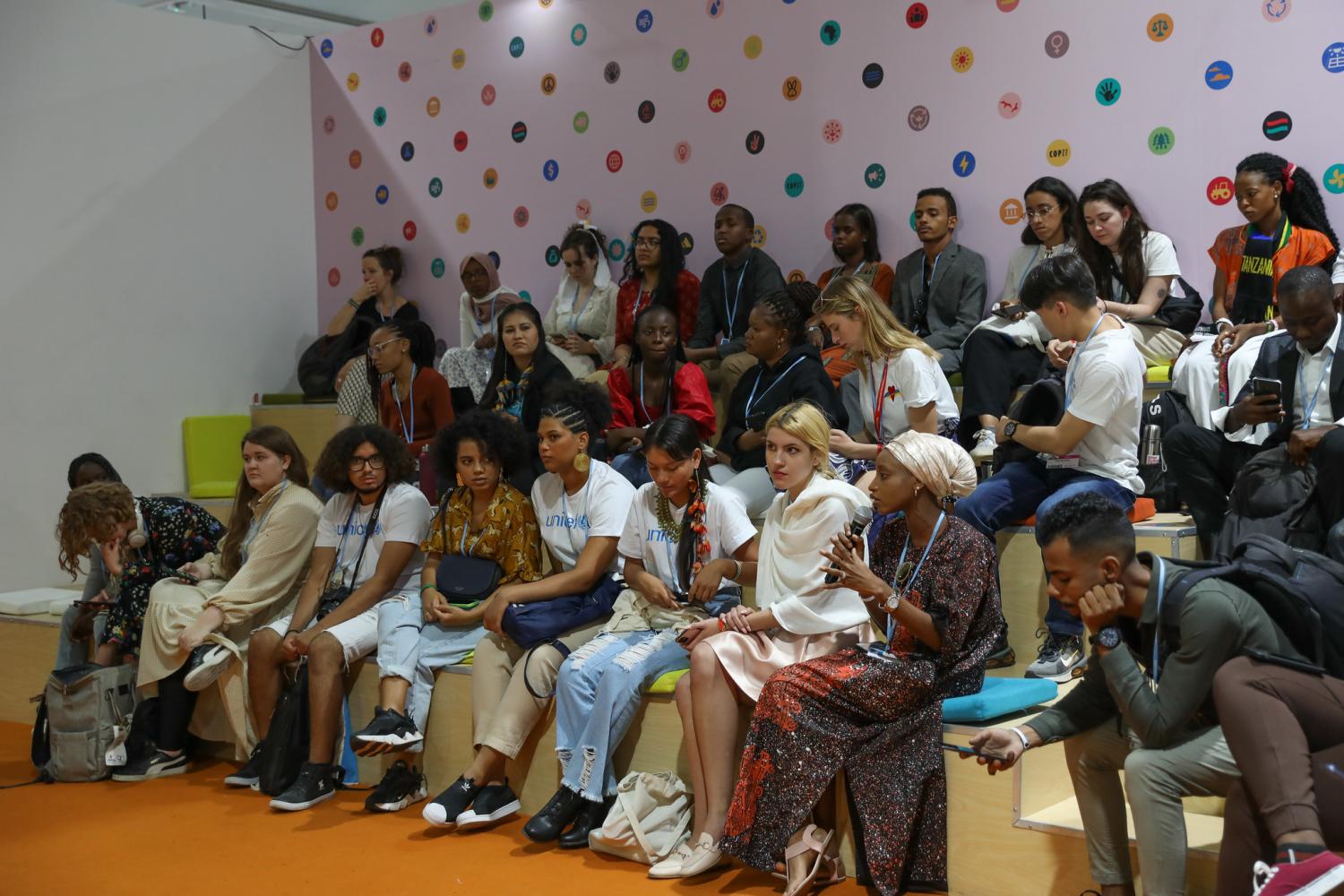
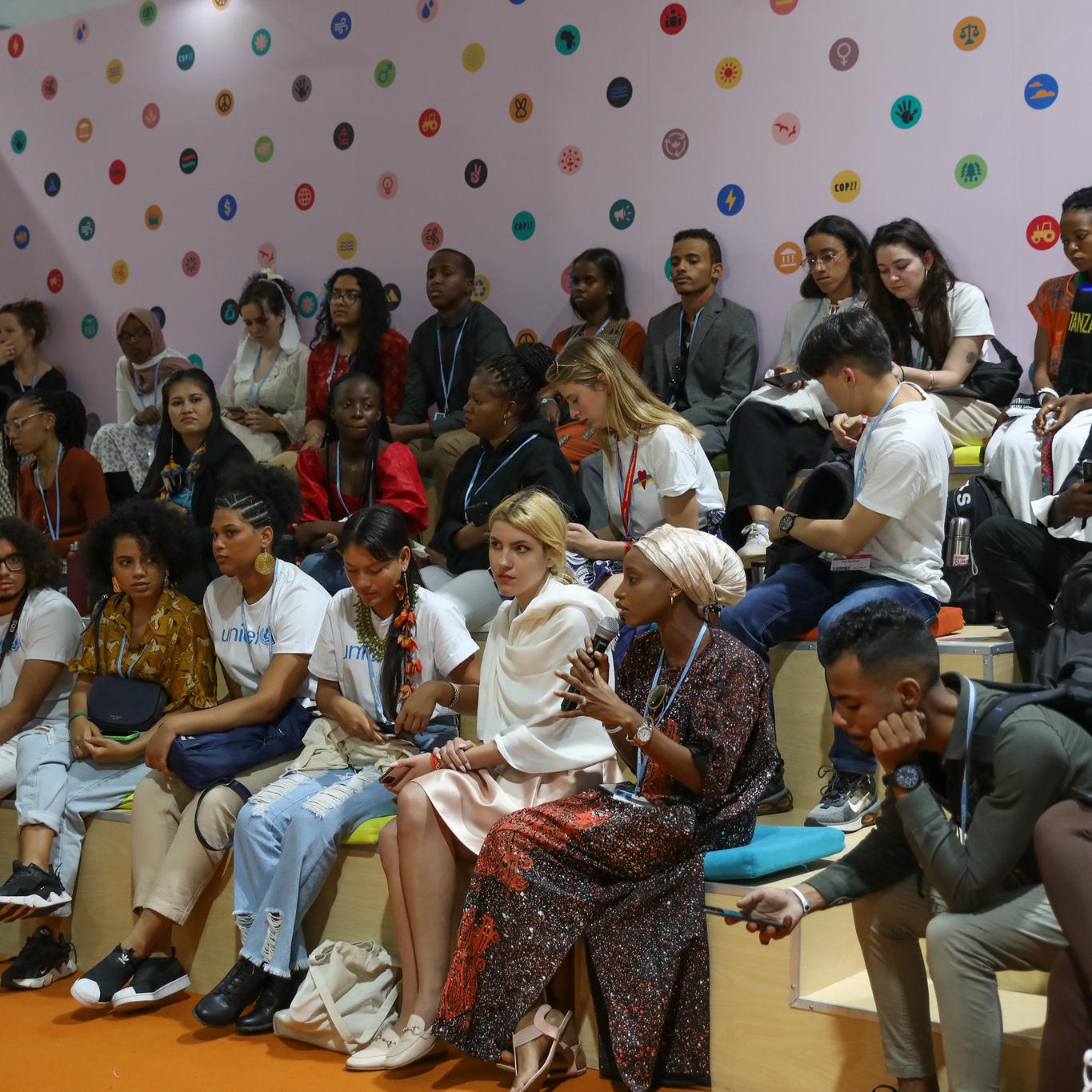
A group of Gen Z attendees gather at one of the many sessions last week during COP27 in Sharm El Sheikh, Egypt
Young activists are making their voices heard at COP27 — calling for accountability as the clock ticks down to 2030 with the world off track to reach conservation and emission reduction goals. Elevating Youth Voices – a panel hosted by the National Geographic Society and the Nature Conservancy – featured two young activists who highlighted the need for a global loss and damage fund in addition to adequate funding for conservation and sustainability initiatives. Notably, neither of the panelists mentioned carbon markets or net zero ledgers as necessary for salvaging the planet. Likewise, if world leaders want to effectively limit climate change, they would be wise to listen to these voices, including those from Gen Z, over those who see the crisis as yet another market opportunity to gamble on.
“We know that young people hold this key to a sustainable future for a thriving planet,” Ian Miller, the Chief Science and Innovation Officer at National Geographic told audience members. Together with the Nature Conservancy, National Geographic supports young activists through their externship program which provides “Explorers” aged 18 to 25 with career development, marketing and media training, conservation skills and getting their voices heard.
According to Jennifer Morris, CEO of the Nature Conservancy, the program currently serves 400 young people in 90 countries, with 20 youth-led projects sprinkled around the globe. The NGO’s goal is to expand to 5000 youth and 500 youth-led projects.
“Looking at it through my perspective as an Iranian American, this is a particularly significant COP because we are in the Middle East right now where temperatures are rising more than twice the global average. And Iran, where my family is from, is among the most climate-vulnerable nations in the entire world,” Sophia Kianni, a National Geographic Explorer who is studying climate change at Stanford University, said in regard to her impressions about the COP27 climate summit as a young activist. “Iran is responsible for just over one percent of global emissions while the United States, where I’m living, is responsible for 25 percent and yet we are not experiencing the same impacts.”
Indeed, the climate crisis is not affecting everyone equally — with the worst offenders facing the fewest consequences so far. According to reporting from the U.N., youth activists flooded COP27 on Thursday. Armed with signs and megaphones they cited facts and made their demands for damage and loss funds clear. Their point, as spoken by an unidentified African activist, couldn’t be any more profound: “Our futures are being stolen from us! This is an injustice!”
Kianni also advocated for the creation of a loss and damage fund, saying that countries like the United States have a responsibility to cover the costs of mitigation and adaptation in the developing world. She cited another activist’s call to action as getting to the heart of the matter: “If you break it, you have to pay for it.”
Likewise, Explorer and panelist Eyal Weintraub, who is studying international relations, called out the lack of effective action by world leaders during and before COP27. “In order to enact change speeches and words are very fine and necessary, but at the end of the day we need you to show us the money.”
He went on to say that loss and damages are basically historical reparations. “It’s recognizing that the development of industrialized countries and the higher quality of life in the Global North was paid for with the resources and blood, sweat and tears of the Global South. And that the same way that the Global South has a financial debt with the Global North, the Global North has an environmental debt with the Global South and we need to start recognizing that and paying up.”
While corporate leaders and their talking heads tout carbon trading and finance as their primary solution to the climate crisis, the youth at COP27 have been clear that they expect real action in the form of mitigation and climate justice. Weintraub pointed to initiatives and movements all over Latin America that are ready and willing to take climate action but lack the funds to do so. Speaking of loss and damage as well as adequate funding for community-based conservation initiatives, he asked world leaders to step up, saying — “We need to have people to champion us and introduce us to those people who can help finance our initiatives, who can open doors so we can really scale up and accelerate the rate of change because we don’t have time to do anything else.”
Truly, the planet does not have time to continue business as usual while gambling on carbon markets. But there is a glimmer of hope on the horizon, as Kianni pointed out — people are beginning to have a better understanding of the intersectionality of the issue. She noted that the climate crisis is also a human rights crisis and a human health crisis, with marginalized communities suffering the most and the vast majority of climate refugees being female.
“We often hear the term ‘the youth are our future,’ but we know the youth are our now,” Morris said, bringing home the point that elevating voices like Kianni and Weintraub is imperative to solving the climate crisis. “Nine out of 10 Gen Zers are actually making an effort to correct the environment,” she said. “I can tell you that was not true in my generation. So, the fact that we have this upswelling of effort by Gen Z is absolutely incredible.” But the question remains — will we hear them in time to change?
Image credit: UNFCCC via Flickr
COP27 a Reminder That Swapping Out Debt for Conservation Funding Has Big Potential, But It’s Not Perfect


A major topic at this year’s global climate summit has been finding sustainability and conservation funding solutions for developing countries that are already saddled with debt and therefore unable to invest in protecting their natural environments — with debt-for-nature swaps emerging as a promising path to halting biodiversity and ecosystem loss. At COP27, The Nature Conservancy hosted one such panel from the Nature Zone Pavilion — an area set aside for discussions related to the worldwide objective of ending nature loss now and beginning to reverse it by 2030, known as Nature Positive.
From the information presented at “Greening Sovereign Debt: Addressing Dual Crises of Climate and Debt,” debt conversion for conservation appears to be a game changer as far as funding initiatives in the Global South are concerned. However – since investors are motivated in large part by the opportunity to get closer to their net zero commitments – these funding mechanisms also represent a lack of real action to drastically reduce emissions in the Global North. The hard truth is, if the planet is to remain habitable, then world leaders cannot focus solely on preserving nature in the developing world in order to excuse the actions of corporations and more developed nations.
That’s not to say that there isn’t a lot to gain from the conservation funding model. Rather, there is a legitimate and sizable benefit to be had by countries that can take advantage of trading their sovereign debt for conservation funding. Andrew Deutz, the Director of Global Policy, Institutions and Conservation Finance at the Nature Conservancy, opened the discussion with this point: “The world is facing a debt crisis. The world is facing a climate finance crisis. And these two crises need to be solved together.”
While debt-for-nature swaps have been around since the 1980s, Jennifer Morris, CEO of the Nature Conservancy, referred to this year’s climate summit as the implementation COP for the “Holy Grail” of private sector funds that are flooding in for conservation. She also referenced the 60 percent of low-income countries that are in or near debt distress, asking the obvious question — how can they be expected to afford investments in sustainability development?
Part of the answer could lie in $10 billion worth of debt conversions for the countries that have already approached the Nature Conservancy for assistance, which would result in $2 billion for their conservation efforts, according to Morris. Success stories from the organization previously partnering with private capital to fund debt-for-nature swaps in the Seychelles, Barbados and Belize were given as examples of the power of financing sovereign debt relief as a catalyst for conservation. She touted the $230 million that was made available for conservation and sustainability efforts in the three countries following $500 million worth of debt conversions. Additionally, marine conservation commitments that came out of the arrangement amounted to almost 200,0000 square miles (about half a billion square kilometers) being protected.
“We used private capital with these credit enhancements to do that,” Morris explained. “It didn’t require a huge grant from the Germans or the French or the Norwegians. We were able to do that with private money. So that is the genius of this model.”
Likewise, Scott Nathan, CEO of the US International Development Finance Corporation (DFC) said, “This is about bringing private capital, opening up the private markets, innovative solutions, tapping into the depths of the private capital markets to help solve these problems.” He extolled the success of the DFC’s partnership with the Nature Conservancy in applying a debt-for-nature swap to Belize, which resulted in a debt reduction of $180 million for the Central American country while providing money to double its protected marine area, support conservation efforts for the Belize Barrier Reef, implement new mangrove reserves, support biodiversity, protect livelihoods, promote tourism and preserve the fishing industry.
Jean-Paul Adam, the Director of the Climate Change & Natural Resource Management Division for the United Nations Economic Commission for Africa, worked on the debt-for-nature swap for Seychelles. While he mentioned that the debt relief was smaller than they originally wanted, the African nation went ahead with it because it fit their marine conservation plan for eco-tourism and sustainable fishing. Doing so allowed for a trust to be set up which has funded conservation projects since 2016.
When asked by an audience member why the debt needs to be leveraged instead of just forgiven, Adam responded that while that option is being considered at the international level for those that are in the worst debt, he sees supporting developing nations in refinancing as a positive move with practical outcomes.
One big positive to refinancing is that the new loans can come with hurricane and natural disaster clauses that suspend payments for up to two years, according to Juan Pablo Bonilla, Climate Change and Sustainable Development Sector Manager at The Inter-American Development Bank. He also mentioned that refinancing can lead to credit enhancement, which many countries would want to take advantage of in order to accelerate their sustainability programs.
Still — relying on the private market has its pitfalls. While Sonja Gibbs, the Managing Director of Head of Sustainable Finance at the Institute of International Finance, estimated that $800 billion could be available annually for debt conversion, she also conceded that funds depend on favorable market conditions. Naturally, scaling up the model is dependent on the returns seen by the private sector. And with ESG on the chopping block for the coming economic downturn, depending on private investment could be risky business.
Overall, debt-for-nature swaps have the potential to promote conservation funding and sustainability in developing nations while relieving the burden of sovereign debt. This could go a long way toward preserving the natural world in the Global South. But, if we are going to have any hope of slowing the crisis, the Global North will have to do a lot more than just throw money at the climate crisis.
Image credit: John Salzarulo via Unsplash
How One Tech Giant Is Ramping Up Clean Energy Access for More Citizens Worldwide
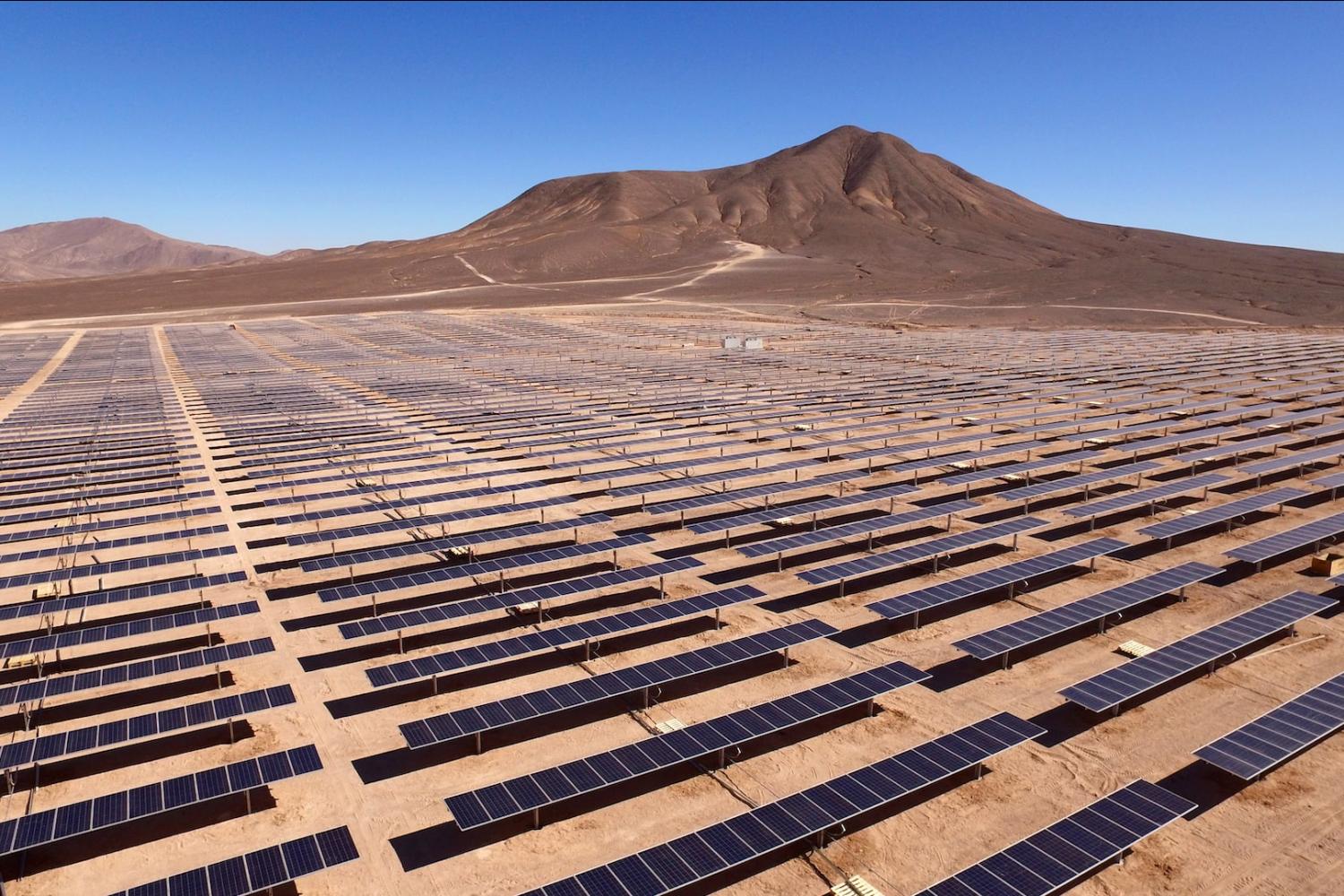
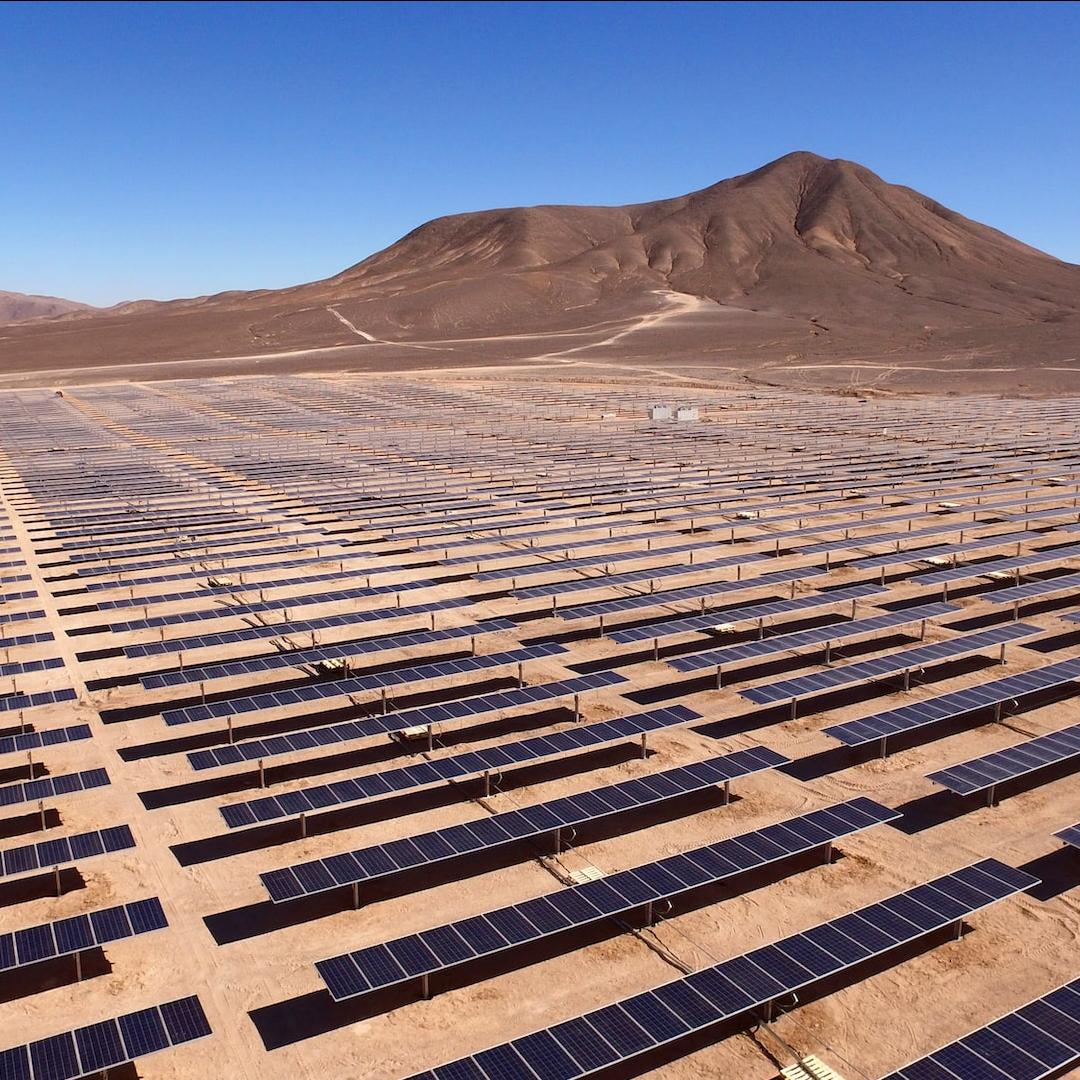
IBM has announced the addition of five new members to its global pro bono environmental program for non-profits, the IBM Sustainability Accelerator, which applies IBM technologies, such as hybrid cloud and artificial intelligence, and offers a team of experts to develop clean energy and technology projects to help populations particularly vulnerable to environmental threats including climate change, extreme weather and pollution.
The combined impacts of the COVID-19 pandemic, disruptions to global supply chains, the energy insecurity caused by Russia’s invasion of Ukraine, and the diversion of public resources to keep food and fuel prices affordable together have hindered the pace of progress toward the SDG 7 goals, according to the International Energy Agency. The poorer a nation or a community are, the more vulnerable they are to natural disasters and climate change. According to the World Bank, natural disasters force 26 million people, roughly equivalent to the population of Cameroon, into poverty each year.
“With the IBM Sustainability Accelerator, we are convening experts and using innovative technologies to help tackle the toughest environmental challenges our planet faces; and transitioning to clean energy is a critical step right now,” said Justina Nixon-Saintil, vice president of corporate social responsibility and ESG at IBM, in a public statement.
Helping marginalized communities get “just and equitable access to sustainable energy resources” through this new cohort not only helps the world achieve the goal of the United Nations Sustainable Development Goal (SDG 7) of ensuring access to affordable, reliable, sustainable, and modern energy by 2030, it can “help the larger global energy transition,” said Nixon-Saintil.
IBM announced these additions to the Sustainability Accelerator at COP27 in Sharm El Sheikh, Egypt. The new members, which were selected from more than 100 applicants, form a new cohort for the program focused on accelerating clean energy projects. (The Sustainability Accelerator’s first cohort is focused on sustainable agriculture.) The organizations were chosen because of their current engagement with vulnerable communities, their ability to improve access to affordable clean energy services and their strategic focus and transparency on measurement and reporting.
The United Nations Development Programme is working with IBM to increase access to sustainable, affordable and reliable energy in several African countries, focusing on those furthest left behind. Using UNDP’s technical knowledge and IBM’s expertise in artificial intelligence and geospatial analytics, the goal is to forecast electricity access to better guide policy and investment decisions.
The international NGO Sustainable Energy for All and IBM are teaming up to build an intelligent model to project energy needs based on current and future human activity. The model will be designed to help to address key development challenges such as lack of energy access and poor healthcare, and support the development of robust infrastructure planning, such as electrification plans. IBM will develop open-access datasets and an energy needs model using temporal and spatial data. Kenya and India are being considered as the first regions for pilot projects.
IBM and Net Zero Atlantic of Canada are collaborating to create an interactive digital tool that will geospatially display environmental and socioeconomic impacts of possible energy system futures for Nova Scotia. The long-range goal is for Indigenous communities in Nova Scotia to leverage advanced modeling capabilities to inform their input into energy and development planning. The tool aims to be easy-to-use, locally relevant and time efficient.
The city government of Miyakojima, Japan is working with IBM to support the development of a renewable energy strategy including a microgrid on Miyakojima Island, a remote community especially vulnerable to typhoons. The goal is to help their residents, who rely on a clean local environment for the tourist industry and agriculture. Miyakojima City Government and IBM will collaborate to leverage IBM technologies to model electricity demand and advise energy infrastructure development.
The Environment Without Borders Foundation is collaborating with IBM to develop a platform to forecast, track, and communicate clean energy usage options in Egypt. The goal is to enable resilient and sustainable infrastructure and operations for clean energy in Egypt, helping residents of remote locales where energy is currently both expensive and unreliable.
In February, IBM announced it plans to select five non-profit organizations for the accelerator annually and expects to provide $30 million worth of services by the end of 2023.
Image credit: Antonio Garcia via Unsplash
Discharged and Displaced: Breaking the Military-to-Housing Insecurity Pipeline


Much like many other signs I’ve seen, this one outside the New York city subway says “Homeless Veteran. Please Help.” It pains me to see yet another fellow veteran who has fallen through the cracks of an extremely broken system – who hasn’t been afforded the same protection they’ve provided for their country by risking their lives every single day.
On any given night, an estimated 40,000 veterans go without shelter in the United States. Additionally, about 1.5 million veterans are considered at-risk of homelessness. According to Iraq and Afghanistan Veterans of America’s (IAVA) most recent member survey, 23 percent of respondents didn’t have a permanent place to live when they transitioned out of the military, out of which 77 percent reported couchsurfing temporarily.
These statistics reflect the frightening and challenging reality of the veteran housing crisis, which has been exacerbated by the COVID-19 pandemic. Due to the nature of veterans’ service, this community faces unique challenges during their transition back to civilian life, which perpetuates a military-to-housing insecurity pipeline.
In order to break this pattern, we must combat all the leading contributors of homelessness – unemployment, lack of affordable housing, substance abuse, mental health challenges, and many more – through a holistic approach that employs a clear understanding of their interconnectedness.
Employment
One of the most obvious shifts that veterans face post-service is a change in employment. While veterans spend years in the military upgrading their skills in particular fields, these skills are not always transferable to the civilian labor force. This is a significant impediment to veterans during their transitional period.
What’s more, veterans are often subject to increased scrutiny from employers. The reluctance of employers to hire those with the possibility of deployment (for individuals continuing their service in the Guard and Reserves) as well as veterans with disabilities – despite legal requirements against such discrimination – affects employment opportunities. Further, they may not have the qualifications, such as a diploma or certificate, which are often required to obtain a position. This has resulted in a combined under-employment and unemployment rate of 61 percent for transitioning service members and veterans.
These veteran-specific barriers to full employment have a direct impact on housing insecurity. The inability to secure employment results in the lack of a reliable source of income, which hinders veterans’ capacity to apply and pay for housing.
Affordable housing
Only 36 affordable and available rental homes exist for every 100 extremely low-income renters – creating an overall shortage of 7 million affordable rental homes nationwide. Uncertain income in addition to lack of affordable housing creates a vicious cycle of housing insecurity. Moreover, 2017 census data showed that more than 660,000 veterans living in low-income households still spent more than 50 percent of their income on housing. Veterans in this situation are at a higher risk of being evicted or experiencing homelessness, with countless individuals forced to make impossible decisions on whether to pay for housing or other necessities like food.
While many short and long term housing instability solutions and prevention services have been implemented, they are often underutilized and often unequipped to address the complex needs of veterans who have experienced homelessness for long periods of time.
Physical disabilities and mental health
As previously mentioned, injuries among returning service members can lead to housing insecurity if they do not have adequate support networks. Overall, 53 percent of individual veterans suffering from homelessness have disabilities, compared to 41 percent of non-veteran individuals without shelter. Additionally, medical bills due to these injuries can begin a chain reaction that eventually leads to homelessness.
Fifty percent of veterans experiencing homelessness suffer from serious mental illnesses. Mental health challenges often exacerbate veterans’ isolation from communities despite the need for community support to navigate living with a disability and accessing care, which can compound the housing insecurity cycle.
Physical disabilities and mental illness often go hand-in-hand with substance use disorder (SUD). For example, veterans who have been prescribed opioids for pain management as a result of a service-related injury are at risk of abuse and, in turn, addiction. Additionally, 37 to 50 percent of veterans who served in Afghanistan and Iraq were diagnosed with a mental health issue associated with SUDs and 63 percent of those diagnosed with SUDs also met the criteria for PTSD. Veterans who are dealing with SUD or who have been incarcerated as a result of substance abuse issues are often unable to participate in housing programs.
Where do we go from here?
One such solution that addresses the intersectionality of housing issues is the Building Solutions for Veterans Experiencing Homelessness Act of 2021. This bill would strengthen programs emphasizing permanent solutions to housing instability and homelessness experienced by veterans across the country and preserve expiring COVID-19 related housing programs.
Among the many critical solutions in this bill, this legislation would provide greater accommodations for veterans experiencing homelessness by permanently removing barriers on funding for construction of transitional housing, expanding public transportation for veterans to access physical and mental healthcare and delivering appropriate medical care for aging veterans while they await long-term care placement, and increase and make permanent funding connecting veterans with long-term jobs.
Current programs from veteran service organizations (VSOs), such as IAVA’s Quick Reaction Force (QRF) which helps veterans navigate housing programs based on their needs and preventing evictions – would also be enhanced by this legislation.
The problem of homelessness is perceived by some as a personal moral failure, not a systemic problem that has led us to abandon the most vulnerable in our society. It takes concrete actionable solutions from society, as a whole, to end homelessness. By expeditiously passing the Building Solutions for Veterans Experiencing Homelessness Act, our policymakers can make historic gains in eliminating the veteran housing crisis.
Interested in having your voice heard on 3p? Contact us at [email protected] and pitch your idea for a guest article to us.
Image credit: Benjamin Faust via Unsplash
COP27: Building a Regenerative Economy Through a Just Transition
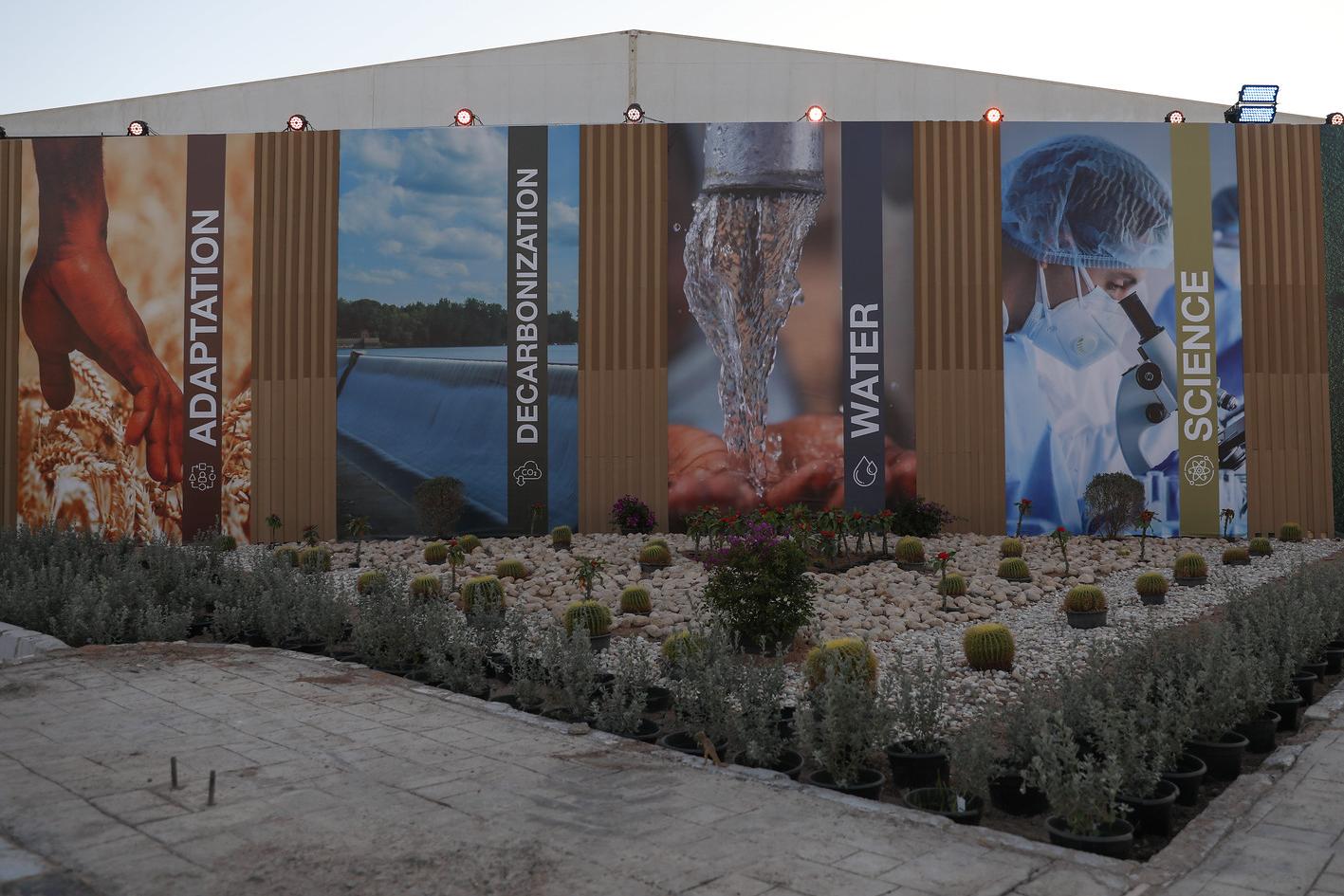
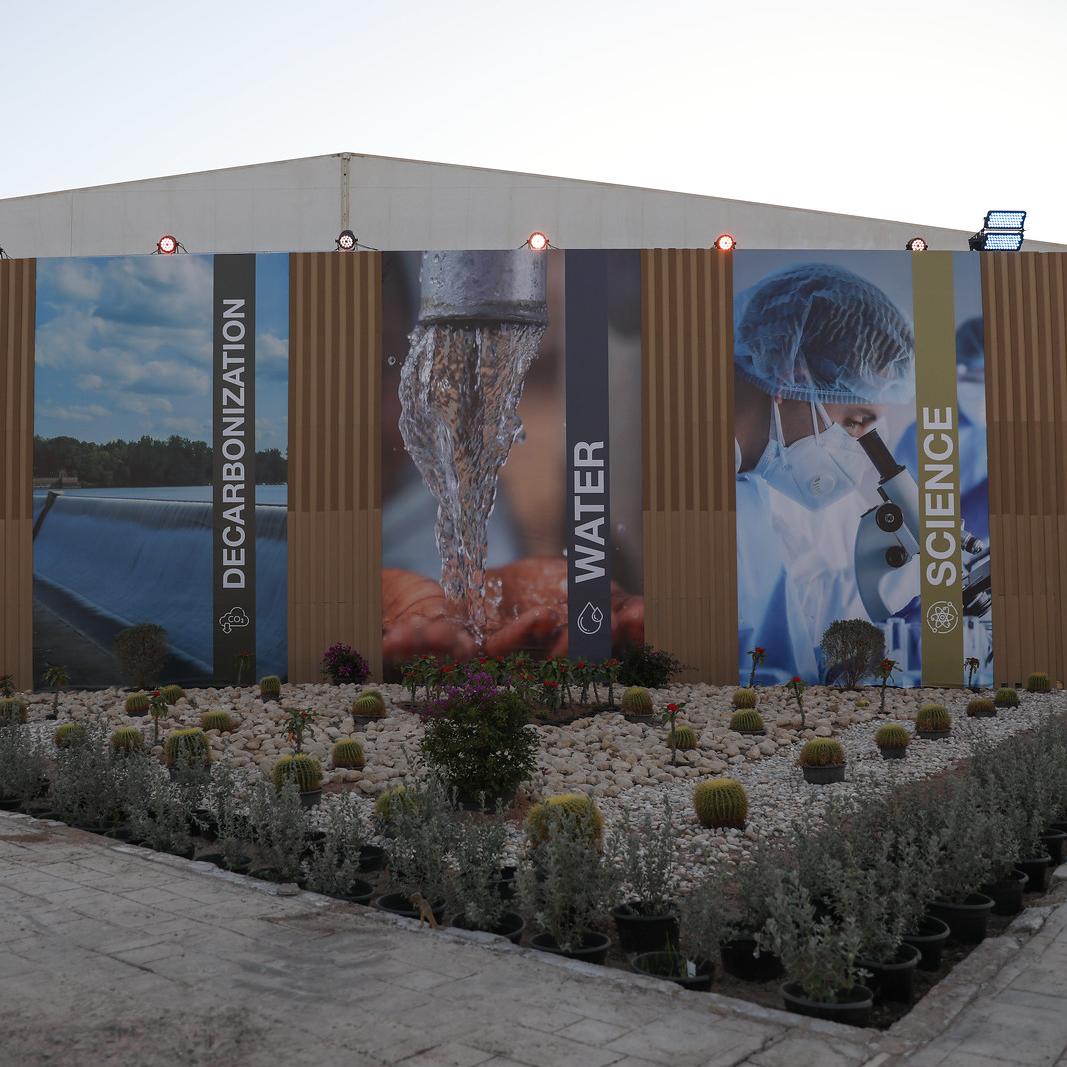
COP27 at Sharm El-Sheikh, Egypt, on Nov. 6
As the sustainability world drowns in an alphabet soup of ESG, CSR, and a multitude of other industry acronyms, at COP27, one concept that the international trade union movement has long developed and promoted is now being embraced by businesses, NGOs and governments to describe climate action plans that are socially equitable, financially viable and environmentally regenerative: a just transition.
A just transition seeks to encompass the concepts of human rights, circularity, poverty alleviation and the environment. One of the only six high-level round tables for world leaders was dedicated solely to discussing such a transformation, as well as an entire COP27 event pavilion. During the conference, representatives from financial institutions, industry and NGOs have been discussing their organizations’ contributions to a just transition in an array of panels and lectures.
More governments and businesses are embracing the shift to a just transition
At COP26, over 30 countries including the United States, Canada and the European Union signed the Glasgow Just Transition Declaration, which aimed to “deliver sustainable, green and inclusive economic growth to meet the challenge of decarbonizing our economies, in line with limiting the global average temperature increase to 1.5°C above the preindustrial levels.”
Countries that signed the declaration committed to supporting workers vulnerable to the economic effects of decarbonization, increasing engagement among governments, employers, and workers’ groups affected by a green energy transition, and implementing policies to expand clean energy and foster inclusive economic growth that respects human rights. Many corporations have followed their national governments’ lead to include such policies and procedures into their overall business strategies.
Haley St. Denis, whose title is head of just transition at the Institute for Human Rights and Business (IHRB), is encouraged by the number of companies embracing the concept of a just transition. During one side event, St. Denis said, “A lot of the guides on just transition are targeting governments to help them establish just transition frameworks. It’s not clear what’s expected of businesses yet, and it can be scary to stick your head above the parapet.” She noted that engaging the private sector is key to ensuring inclusive economic growth.
Why finance must support this movement
Maria Simonson is the Head of Sustainability at Swedish Export Credit Company (SEK), a state-owned company that finances Swedish exporters. She believes that a just transition model will soon be the norm in the European Union. During an event about this focus at COP27, she said, “Increasingly, the just transition is coming in through regulation in the E.U., and it’s going to be hard-wired into the financial system.”
Discussions at a just transition roundtable on November 7 echoed Simonson’s ideas. Discussions centered on working to ensure consistent finance for this shift, exploring finance opportunities available from the private sector, and what financial institutions need in order to increase funding availability for such programs.
Simonson said, “The just transition is about recognizing our values, and we are working to integrate them into our analyses and policies, and also into our financial products. For example, we finance a lot of infrastructure projects, and human rights are relevant to that. Pollution is relevant, because pollution is a human rights issue. Our starting point is that we work with sustainability from a holistic perspective. This is part of our due diligence process.”
Moving forward with a just transition
St. Denis believes that moving forward, it is important for businesses and governments to ensure that a movement to a just transition does not lose its meaning. She warned, “We are seeing an increase in misuse of this visionary concept. Just transition has already become an acronym. The term could become meaningless, because if ‘JT’ can mean everything to everyone, then it will mean nothing at all. We challenge everyone in the room: if ‘JT’ is not going to go the way of CSR and ESG, then we have to develop means of quality control for what ‘just’ in just transition means.”
Talks and events about this framework are expected to continue throughout the remainder of COP27, which runs from Sunday, November 6 to Friday, November 18.
Image credit: UNFCCC
Cultural Changemakers Have a Powerful Role in Promoting Climate Action


Photo: Panelists talk at the Nest Summit Campus NYC Climate Week event earlier this fall. The panelists, from left to right, are: Westley Schultz, co-founder of and lead vocalist for The Lumineers; Colin Wilson, retired player for the NHL's Nashville Predators and Colorado Avalanche; Sofi Armenakian, Head of Sustainability for the Atlanta Hawks and State Farm Arena; Erik Distler, VP of Sustainability at AEG; and Cassie Lee, CEO of Sound Future
With popular bands embarking on months-long tours and sports teams traversing to away games dozens of times each season, sustainability may not first come to mind when thinking about the events and entertainment industry. But leaders in the sector — from athletes and musicians to executives — are hoping to reshape that narrative through awareness-building campaigns and climate action initiatives.
A panel of experts took center stage at the NEST Summit Campus during New York’s Climate Week this fall to discuss the role of cultural changemakers, and the broader entertainment industry, in promoting climate action and environmental sustainability. Cassie Lee, CEO of Sound Future, a nonprofit deploying environmental solutions for the live event industry, said the gathering power of events “should do good and can do good.”
Events have the potential to be unrivaled social agents and cultural connectors that inspire feelings of camaraderie and a push for positive change. “In this industry, we have the opportunity and responsibility to bring people along, make sustainability inspiring, and make it a little more engaging than what you find in the news on a daily basis,” said Erik Distler, vice president of sustainability at AEG, the world’s leading sports and live entertainment company.
As the host of more than 160 million people across 22,000 live events last year, AEG’s international reach presents an opportunity to bring its fans along the company's journey toward making a more positive impact on the planet.
Sofi Armenakian also sees the power of fan engagement firsthand in her role as the head of sustainability for the NBA’s Atlanta Hawks and State Farm Arena. In April, the Hawks’ home at State Farm Arena became the world’s first sports and entertainment venue to earn zero-waste certification. In less than two years, the arena went from diverting just 10 percent of all waste from landfills to diverting a minimum 90 percent of all waste from the roughly 175 events it hosts annually.
Armenakian credits partnerships as the key to driving sustainability success. “We all know there’s a real crisis. We all know we need to take action,” Armenakian said. “In order to take action and make the needle go in the right direction, we really need to partner up and collaborate and truly meet people where they are.”
Fan engagement and collaboration among industry stakeholders is also key to the Sports for Climate Action Framework — which challenges industry stakeholders to leverage sports as a "unifying tool to drive climate awareness" among the public. Launched in 2018 by industry leaders together with the United Nations, the Framework now includes over 100 signatories, including AEG sports teams like the Los Angeles Kings and Los Angeles Galaxy as well as leagues like the World Surf League, National Basketball Association, and Formula E.
On the live entertainment front, The Lumineers — a Grammy-nominated band co-founded by vocalist Wesley Schultz — are among those leading the way in this space, headlining one of the world’s first “climate-positive” tours in 2020.
The Lumineers’ 2022 Brightside World Tour replicated this climate success and featured a stop at Atlanta’s State Farm Arena in August. The band and arena partnered to offer fans who recycled the chance for seat upgrades, autographs, and other prizes. Schultz joined the panel in New York and said that although tours are “inefficient by nature,” there are ways to meaningfully lessen impact — for example by offsetting a tour’s carbon footprint, eliminating single-use plastic bottles and powering down the buses during shows.
While music stars like Schultz and sports athletes like former NHL player Colin Wilson, who also spoke on the panel, have powerful roles to play in changing the conversation, Distler of AEG said, it's also important to celebrate the “true sustainability leaders” — the back-of-house efforts and staff who sort through waste bins, replace halogen lighting with more efficient LEDs, and make these incremental changes at venues possible.
For its part, AEG has moved to reduce waste at venues and was among the first entertainment companies to adopt a science-based emissions reduction target in 2016, to then more aggressively revise the target in 2019 in accordance with updated guidance on global warming and more stringent emissions standards. The company continues to report on its public-facing targets and sustainability program to communicate progress to stakeholders and fans, and also to discuss challenges, issues needing addressed, and what hasn’t been solved, Distler said at Climate Week. Transparency, accountability, and focusing on progress over perfection is important to AEG, he added.
Overall, the journey toward sustainability in the sports and entertainment sector — which began with stadium recycling bins and evolved to zero-waste commitments and net-zero emissions trajectories — is far from over. But leaders are moving the needle with ambitious targets, holistic programs and by inviting the fans to join the experience.
“We were on a journey to become zero-waste, but now it’s a forever journey,” Armenakian said. “There is no finish line.”
Image credit: AEG